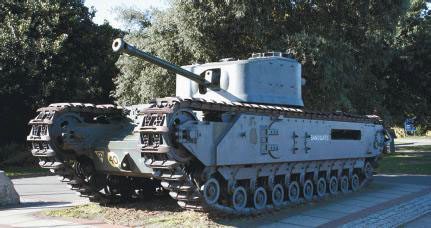
On Portsmouth’s Seafront the Story Still Unfolds
[caption id="DDayPlus70Years_Feature" align="aligncenter" width="806"]
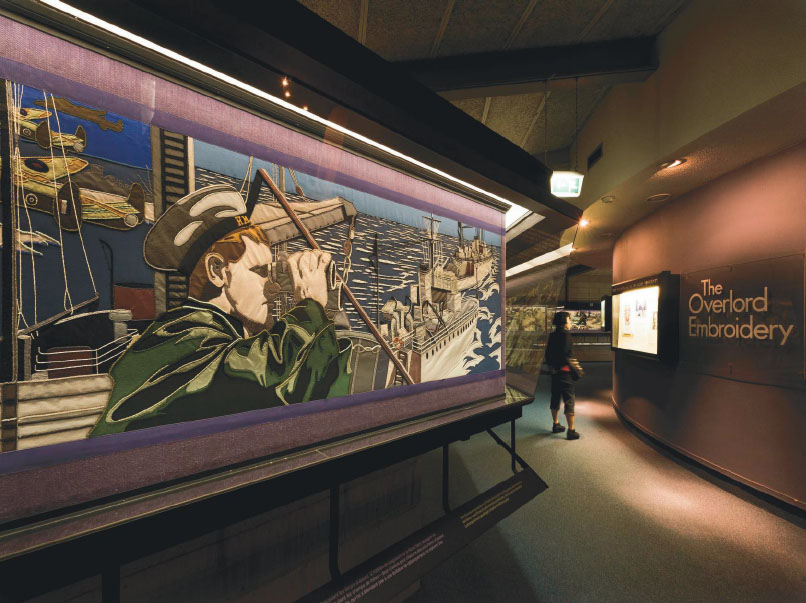
COURTESY OF THE D-DAY MUSEUM, PORTSMOUTH
IT WAS DARK ACROSS SOUTHERN ENGLAND; road signs were gone; American soldiers were everywhere. For two years the entire south coast of Britain was a staging ground. From Barry Island to Felixstowe, Great Britain prepared for the Allied assault on Hitler’s Fortress Europe.
This was to be the largest amphibious invasion in history: Operation Overlord. The entire course of world events was about to be determined, and the epicenter of activity was Portsmouth. From Southwick House just north of the city, Allied commanders led by General Dwight Eisenhower made the decisions. In tunnels underneath Victorian Fort Southwick, the Combined Operations Headquarters coordinated the D-Day invasion feet.
IN AUGUST 1943, Portsmouth’s seafront was declared a restricted zone. By April 1944, Portsmouth was in the center of a 10-mile deep coastal strip stretching from Norfolk to Land’s End closed to all visitors. Southern England was an armed camp; troops and munitions, vehicles and supplies moved to marshalling areas arching around ports from Brixton to Brighton.
On June 6, 1944, some 160,000 soldiers—Americans, British and Canadians—landed on the five beaches spread across 50 miles of the Normandy coast. It took almost 200,000 Allied naval and merchant navy personnel to get them there in some 5,000 ships and support vessels. In the next few weeks, Allied forces would land more than 2 million men in Normandy.
Eastern and Western Task Forces assembled from Cornwall to Kent, from Weymouth, Southampton and Poole. The epicenter of this huge invasion, however, was Portsmouth, home of the Royal Navy. Literally thousands of Allied combat ships of every description filled Portsmouth Harbour and spilled along the Solent from Southampton Water to Chichester. From the viewing platform high on Portsmouth’s Spinnaker Tower today, seeing the harbor bustle with ships of Her Majesty’s Royal Navy, cargo from around the world and ferries salute in passing from the Isle of Wight, the Channel Islands and the Continent, it’s not hard to imagine the scene bristling with warships.
In fact, Portsmouth is the best place to get a sense of that historic event now 70 years ago. Sitting adjacent to Henry VIII’s Southsea Castle on the Solent seafront, Britain’s only D-Day Museum recounts the whole story—from the years of preparation through the events of June 6th itself to the weeks of bloody hedgerow fighting that followed before the victorious “Breakout” opened the door to the liberation of Paris and the Allied advance through Europe.
Pride of place at the D-Day Museum belongs to the Overlord Embroidery. Inspired by the famous Bayeux Tapestry that depicts the events of William the Conqueror’s invasion of England and the Battle of Hastings in 1066, the Overlord tapestry tells the D-Day story from the planning for Operation Overlord in the early 1940s through to victory in the Normandy campaign.
Commissioned by Lord Dulverton of Batsford as a tribute to those who took part in the invasion of Normandy, the Embroidery was designed by artist Sandra Lawrence (alas, no relation to British Heritage’s own Sandra Lawrence). At 272-feet in length, Overlord is the longest embroidery of its kind in the world. Each of its 34 8-foot-long, three-foot-tall panels was copied from original watercolors Lawrence painted. The design was then transferred to linen by an ancient process called “prick and pounce.” It took the Royal School of Needlework five years to complete the tapestry’s embroidery. Lawrence’s original watercolors now hang in the Pentagon, Washington, D.C.
[caption id="DDayPlus70Years_img1" align="aligncenter" width="250"]
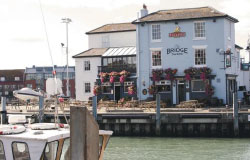
DANA HUNTLEY
SAIL INTO PORTSMOUTH
Trains run from London Victoria or London Waterloo hourly to Portsmouth Harbor. It’s about a 90-minute journey.
The D-Day Museum is open daily from 10 a.m. on Clarence Esplanade, Southsea. It’s about a 20-minute walk, or a £7 cab ride from Portsmouth Harbour.
In the Embroidery gallery, an audio-visual theater shows a changing program of archival period films. Displays re-create scenes of Britain at war—the map room at Southwick house, an air raid warden’s living room during the Blitz and soldiers preparing for D-Day in a forest camp. There is a reconstruction of the Allied landings, including an LCVP landing craft and sundry vehicles of invasion. The last exhibition is “Portsmouth Memories,” which features reminiscences of local folk who took part in D-Day and experienced life on the home front.
ONCE YOU HAVE GOTTEN the story of D-Day and Portsmouth’s prominent role in events, the harbor’s historic waterfront takes on new meaning. With that overview from Spinnaker Tower in mind, a good place to start is the chic, fun and fashionable shopping and dining complex of Gunwharf Quays—just steps away from the Hard, Portsmouth Harbour train station, the Historic Dockyard and ferries across the harbor to Gosport and to the Isle of Wight.
Portsmouth Dockyard, of course, has seen 700 years of naval history unfold within its gates. During the months ahead of D-Day, its resources were turned to building landing craft and parts of the Mulberry Harbors used for landing soldiers and supplies. The Museum of the Royal Navy and the historic ships that highlight the Historic Dockyard will take as much time as you have to give them. For a specifically World War II naval experience, however, take the Gosport Ferry just outside the gates across the harbor to visit the Submarine Museum. Its centerpiece is HMS Alliance, a World War II sub that protected the Atlantic flank of the D-Day invasion. Explore life under the sea at war from stem to stern.
Take a boat tour of Portsmouth Harbour, where state of the art modern warships of the Royal Navy share the channels with maritime commerce, pleasure boats and international ferries. Portsmouth is one place where history and contemporary life blend seamlessly and comfortably. The harbor city, too, will commemorate this 70th anniversary of D-Day, remembering that among all the glories of its storied past this may have been its finest hour.
[caption id="DDayPlus70Years_img2" align="aligncenter" width="507"]
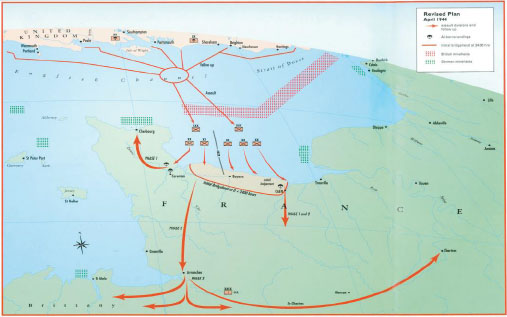
COURTESY OF THAMES & HUDSON
[caption id="DDayPlus70Years_img3" align="aligncenter" width="424"]
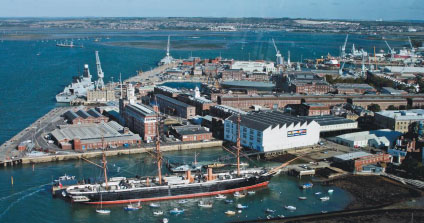
DANA HUNTLEY
[caption id="DDayPlus70Years_img4" align="alignleft" width="431"]

DANA HUNTLEY

DANA HUNTLEY





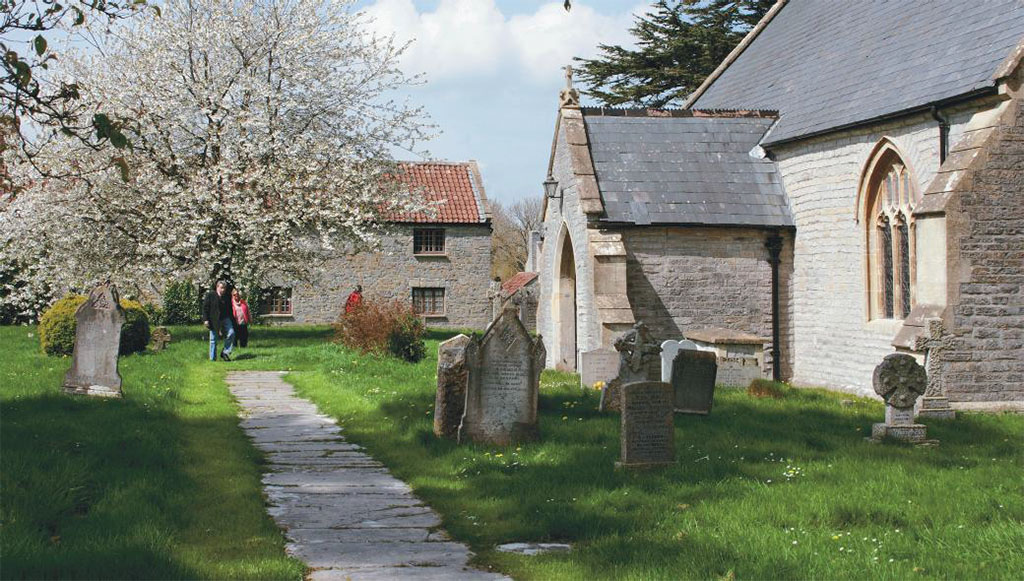



Comments